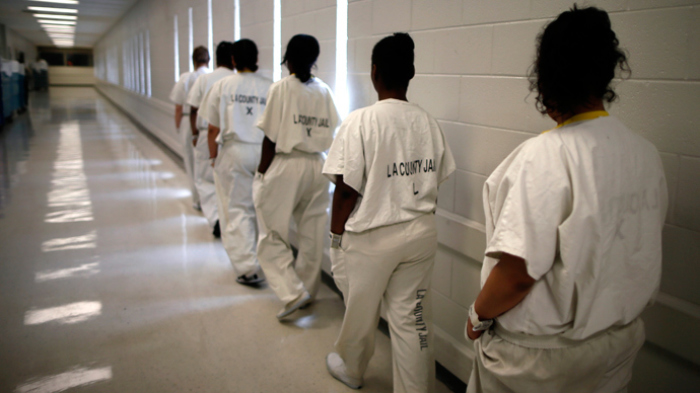255 Calif. prison inmates identify as transgender, nonbinary so they can be moved to women's prisons

California has paved the way for male prison inmates to be transferred to women's prisons, which has raised concerns about the safety and welfare of both the female inmate population and female corrections officers.
Over 255 men who identify as either female or "nonbinary" have in recent months requested to be transferred to women's prisons on the basis of self-declared “gender identity,” according to multiplereports.
The onslaught of such requests was precipitated by Gov. Gavin Newsom’s signing of the Transgender Respect, Agency, and Dignity Act, which requires the state Department of Corrections and Rehabilitation to inquire of every individual to indicate their preferred pronouns, gender identity, and whether they identify as transgender, nonbinary, or intersex. The new law also requires that the department house prisoners in a “correctional facility designated for men or women based on the individual’s preference.”
Thus far, not a single “gender-based housing” transfer request has been denied. Of the 261 requests, all but six were requests from inmates to be transferred to the women’s facilities.
CDCR Deputy Press Secretary Terry Thornton said, “255 are from transgender women and nonbinary incarcerated people who are requesting to be housed in a female institution and six are from transgender men and nonbinary incarcerated people who are requesting to be housed in a male institution.”
According to the Los Angeles Times, many female inmates fear that men are filing requests to be transferred to women’s prisons based on false claims of gender identification. These concerns have seemed to slow down the process of transferring male inmates to women's prisons, the publication added.
Thornton said in an interview with the Times that “a person’s gender identity is self-reported and CDCR will evaluate any request submitted by an incarcerated person for gender-based housing.” She further explained that they've held discussions with the Inmate Advisory Council at Chowchilla and with trans-identified men at San Quentin State Prison concerning this issue in an effort to quell female inmates' fears.
For many female inmates and correctional staff, those fears still remain.
Speaking with Fox News' affiliate in Sacramento Wednesday, a corrections officer who went by the pseudonym of "Annie" said she believes she'll be fired if her identity is revealed for publicly expressing discomfort over the law’s requirement that she and other female officers perform strip searches involving trans-identifying male inmates.
“They’ve already said we will be written up. All the way up to termination,” Annie said.
“You’re ordered to go strip out this inmate in a secure room … it takes your power away,” she added. “Where’s the boundaries? Boundaries are gone.”
The news outlet obtained an internal email from the prison administration explaining that female employees who do not wish to “perform the strip out will be given a direct order by the supervisor to perform the strip out and if they still refuse that supervisor will author a memo and provide it to the facility captain in regards to insubordination.”
In a statement to The Christian Post on Thursday, the radical feminist group Women’s Liberation Front, which has been fighting against placing males in women’s prison facilities regardless of how they identify, said while they were glad to see public officials looking to correct their neglect to resolve the issue of sexual violence in men’s prisons, they're going about it the wrong way.
" ... it’s cruel and inhumane to try to solve this problem for only a small subset of at-risk men by deciding to have men’s prisons and then mixed-sex prisons. California’s women’s facilities are mainly low-security, open-plan dormitories, and they’re overcrowded already,” the feminist group said.
“Part of the problem is that the Prison Rape Elimination Act ties officials’ hands by saying they can’t create separate units or wings for prisoners on the basis of sexual identity or gender identity claims. It further requires collection of information about a prisoner’s risk as a target of violence, but not as a potential perpetrator of it, based on sex.”
“It made sense at the time because there was no serious consideration of ending women’s rights to female-only housing while in the custody of the state. But it means there’s a lot of data gathered to the effect of describing men as vulnerable to male sexual violence, and no framework for considering the relative vulnerability of women to male sexual violence, which the vast majority of incarcerated women had suffered already before their convictions.”




























